The week at a glance
- Killdeer on Shetland
- American Coot in the Outer Hebrides
- Three Eastern Black Redstarts remain...
- ...as do excellent numbers of Shore Larks and Waxwings
- American Tree Sparrow in southern Sweden
It's really starting to feel like winter is upon us. Last week's noticeable drop-off of new arrivals continued this week, and our news page is ever more prominently characterized by typical winter fare — not least Waxwings which, with over 420 reports this week, accounted for almost 20 per cent of our entire news output.
Arguable highlight of the week was a smart Killdeer on Shetland, though it doubtless would have proved an entirely more alluring vagrant had it chosen to pitch down on the British mainland. Present near Sandwick, it showed well after it was found on 13th and may well tempt one or two of the hardier twitchers north if it hangs around.
Killdeer, Sandwick, Shetland (Video: Shetland Wildlife)
Also discovered this week was an American Coot in the Outer Hebrides. Though this transatlantic wanderer has become an altogether more regular fixture on British and Irish soil in recent years and is therefore again unlikely to draw a big crowd to its temporary home of Balranald, North Uist, it's a notable record nonetheless. In fact, given that the last British record (in winter 2014/15) came from the exact same loch, it's tempting to suggest it could even be a returning bird.
Each of the three Eastern Black Redstarts was still present at the beginning of the week, though the bird at Cayton Bay, N Yorks, was not reported after 11th. However, both the Hartlepool Headland and Skinningrove birds lingered throughout.
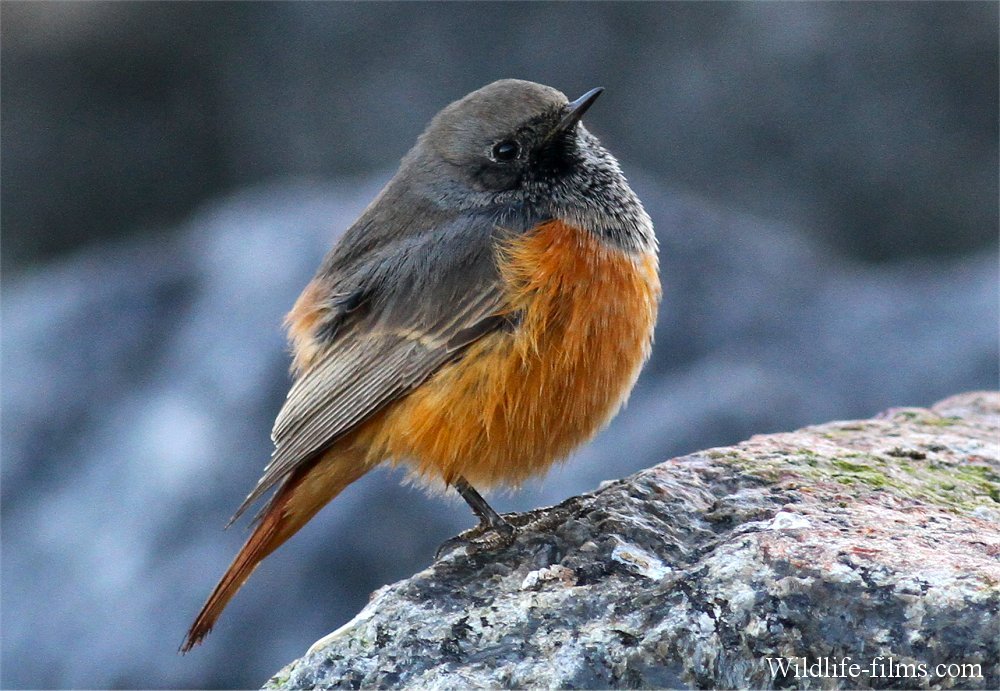
Eastern Black Redstart, Skinningrove, Cleveland (Photo: Paul Wetton)
Twenty-two days was eventually enough for the Isabelline Wheatear to call time on its extended stay at Burnham Overy Dunes, Norfolk — it wasn't seen past 12th. Last week's Oriental Turtle Dove, however, defied the odds and contentedly lingered another week at North Roe, Shetland, while the Siberian Accentor was still scrubbing around on a ride just north of Avoch, Highland, to at least 13th. After 10 days without news and some rather chilly weather in the interim, it was a bit of a surprise to learn that Alkborough's Western Swamphen was still hanging on on 13th.

Oriental Turtle Dove, North Roe, Mainland, Shetland (Photo: Roger Riddington)
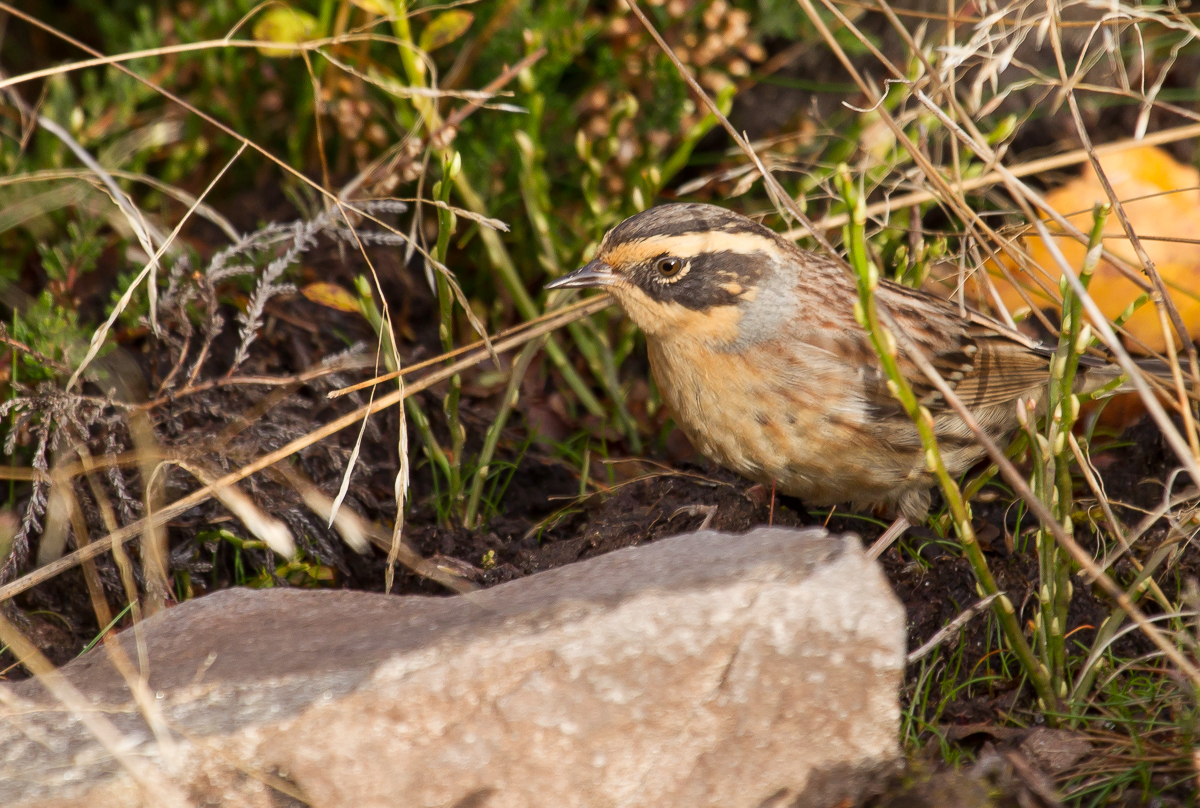
Siberian Accentor, Avoch, Highland (Photo: Chris Griffin)
Two unconfirmed reports from Co Cork concerned an Upland Sandpiper calling several times at Rosscarbery in the late evening on 10th and a female/immature Harlequin Duck off Sherkin Island, as viewed from the Cape Clear ferry, on 15th.
A male Black-throated Thrush at Queenamidda, Orkney, on 9th relocated to nearby Costa the following day, remaining there to 14th. New passerines were otherwise thinly distributed and the only significant mainland rarity seen this week was the Desert Wheatear again at Thurlestone, Devon, on 13–14th. Two Hornemann's Arctic Redpolls were at Baltasound, Unst, on 14th.
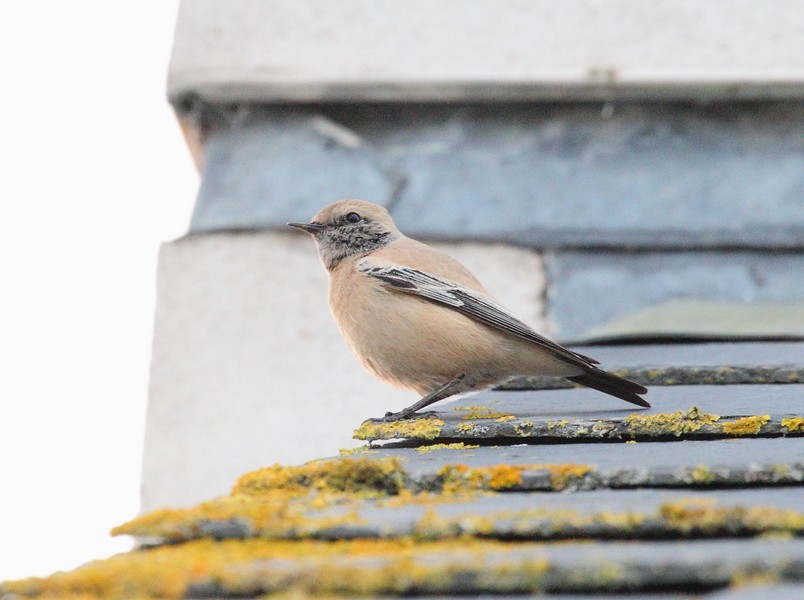
Desert Wheatear, Thurlestone, Devon (Photo: Alan Doidge)
A washed-out stonechat at Dungeness was initially touted as a candidate Siberian, although it's now widely assumed to be an aberrant European. Rather less controversial was the continuing Black-bellied Dipper at Needham Market, Suffolk.

Stonechat, Dungeness NNR, Kent (Photo: Chris Bond)
Three Dusky Warblers included a new bird trapped and ringed at Nanjizal, Cornwall, on 14th, another still nearby at Land's End to 9th, and a third on St Mary's, Scilly, on 10th. Both the week's Pallas's Warblers were in Wales — one on Bardsey Island, Gwynedd, on 12th and another on Skomer, Pembrokeshire, the following day. Most of the remaining Yellow-browed Warblers are now to be found in the South and South-West, although there were records of birds still in the likes of Durham and North Yorkshire this week. A Barred Warbler continued on Orkney to at least 11th.
The Rose-coloured Starling was still in Penzance, Cornwall, on 10th, and last week's Red-breasted Flycatcher continued at Slyne Head, Co Galway, to 12th. Eight Richard's Pipits were logged, and Little Buntings were on Mainland Shetland, Fair Isle and in Suffolk. Upwards of 30 Great Grey Shrikes included a very showy bird at Little Woolden Moss, Gtr Man, all week.

Great Grey Shrike, Little Woolden Moss, Greater Manchester (Photo: Ivan Ellison)
Shore Larks seem to be settling down, with up to 75 still at Holkham Gap, Norfolk — no doubt these'll prove very popular through the winter, should they stick. A sizeable group of 21 was at Long Nab, N Yorks, on 13th and smaller numbers were reported from a further ten sites.
Potentially one of the more popular finds this week was a drake Hooded Merganser at Kilbirnie Loch, Ayrshire. Found on 9th (and still there on 15th), this beauty is presumably the same bird that was last seen in neighbouring Clyde on 10 October — but where has it been in the meantime? Elsewhere the American Black Duck was still in Highland on 10th and at least 10 American Wigeon included new birds in Highland, Herefordshire, and Cornwall. Five Green-winged Teal included a new bird on Cornwall's Hayle Estuary from 9th.
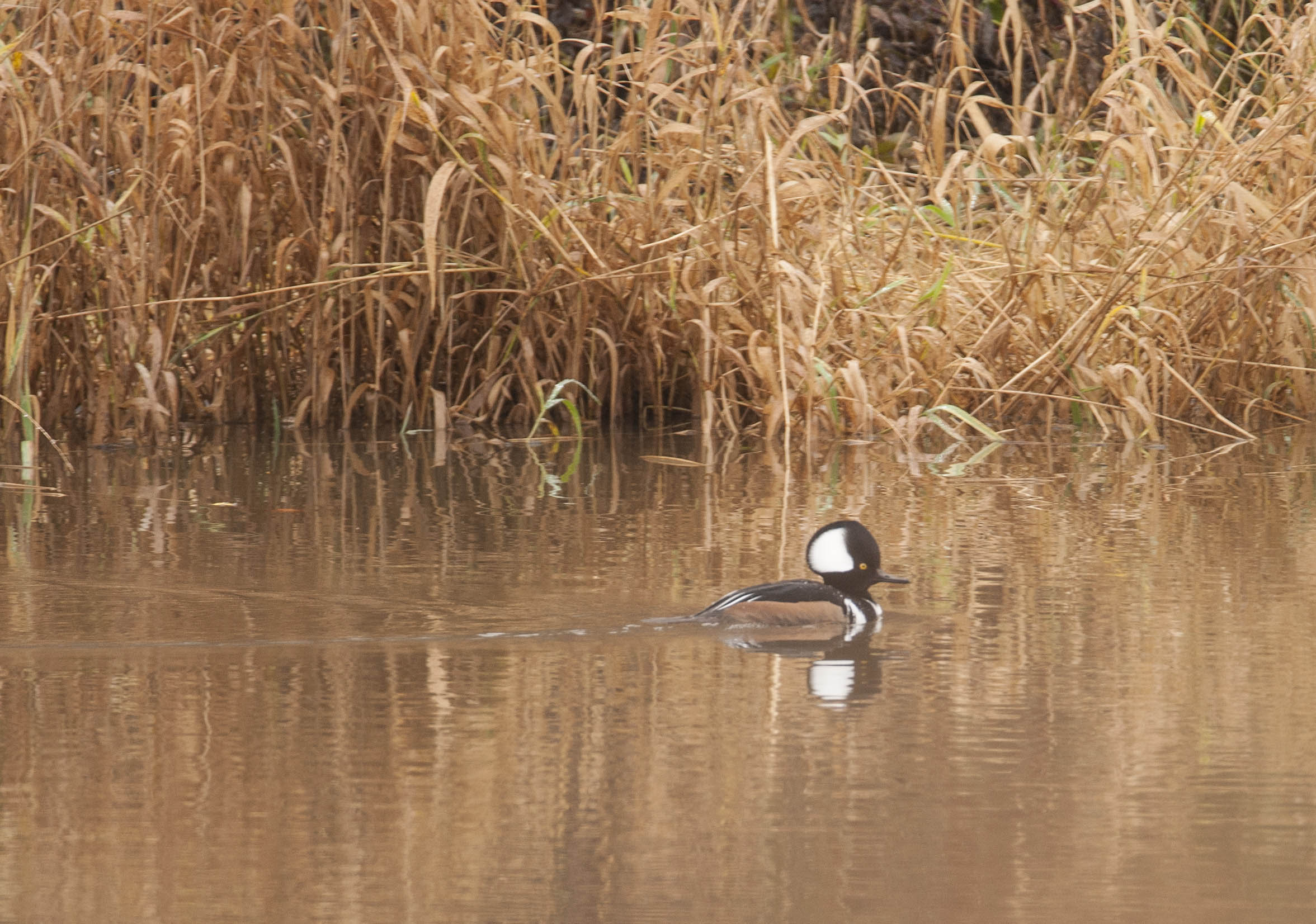
Hooded Merganser, Kilbirnie Loch, Ayrshire (Photo: Bob Greer)

Green-winged Teal, Hayle Estuary, Cornwall (Photo: John Rowe)
A drake Lesser Scaup was found at Lough Rea, Co Galway, on 13th; four Ring-necked Ducks included a new drake at Lough Mourne, Co Donegal, on 13th. The drake Ferruginous Duck returned to Blashford Lakes, Hants, for its fifth winter on 13th and the youngster lingered at Wilstone Reservoir, Herts. Remarkable scenes materialized off the coast of Papa Westray, Orkney, on 10th where up to six White-billed Divers were noted together (three were still there on 12th).
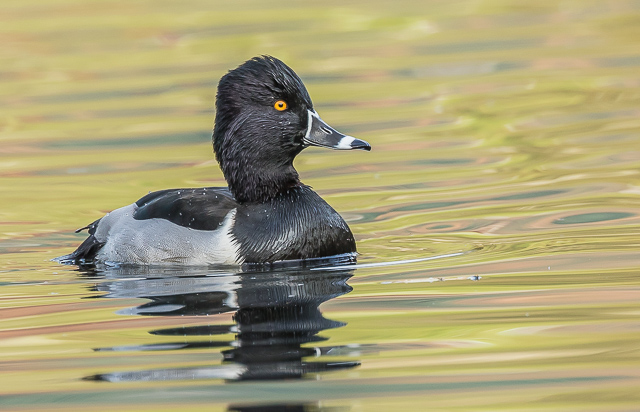
Ring-necked Duck, Pitlochry, Perth & Kinross (Photo: Jon Worthington)
A Todd's Canada Goose near Burnham Market and Docking, Norfolk, on 13–14th could well be the recent bird in Northumberland. Two more Todd's remained in Co Sligo alongside a Richardson's Cackling Goose. Three Snow Geese were at Loch of Strathbeg, Aberdeenshire, on 10th. Black Brants were seen in Dorset, Kent, Essex and Norfolk.

Todd's Canada Goose, Docking, Norfolk (Photo: David H Hatton)
Given its rather short stay in East Yorkshire, it was perhaps a little surprising that the juvenile Pallid Harrier decided to hang around in North Lincolnshire all week (it was still at Grainthorpe Haven on 15th). Meanwhile the North Ronaldsay Northern Harrier continued there all week and four Rough-legged Buzzards were noted, in Norfolk, Lincolnshire, East Yorkshire and Northumberland.
The Bonaparte's Gull continued to be reported frequently from Dawlish Warren, Devon, but just one Ring-billed Gull was logged — an adult at Nimmo's Pier, Co Galway. After last week's mini-arrival, Glaucous Gull numbers dropped back into single figures, though a slight increase in Iceland Gulls saw numbers into the teens. Caspian Gulls were reported from 22 sites, including an impressive nine at Albert Village Lake, Leics, on 9th.
Once again the Squacco Heron resurfaced in Pembrokeshire, this time in a garden in Saundersfoot from 10–12th. A slight reduction in Cattle Egret reports saw birds logged at 16 sites, with sample counts including seven at Carrigaline, Co Cork, six at Burton Mere Wetlands, Cheshire, and four at Tacumshin, Co Wexford. Glossy Ibises were at just six sites including one still as far north as North Ronaldsay, Orkney, on 14th and 'new' birds near Ely, Cambs, and over Bray, Co Wicklow.
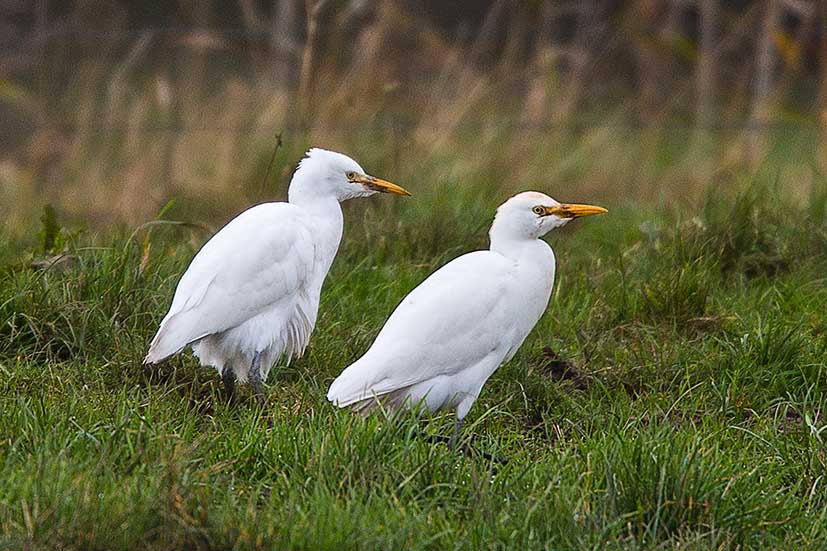
Cattle Egret, Skidbrooke, Lincolnshire (Photo: Ron Marshall)
The only Long-billed Dowitcher noted this week was the Tacumshin bird, still there on 12th, while the Lytchett Fields Lesser Yellowlegs was the sole representative of its kind reported over the seven days. The Hudsonian Whimbrel was of course also still present in West Cornwall.

Lesser Yellowlegs, Lytchett Bay, Dorset (Photo: Ian Ballam)
Western Palearctic news
Clear highlight of the week was the first regional record of American Tree Sparrow. Present near the town of Staffanstorp, to the east of Malmö, Sweden, from 12th, this extraordinary occurrence shows many similarities to the early-winter arrival of a Fox Sparrow in Estonia in 2012, and no doubt many regional listers will be hoping it proves as co-operative in the coming days and weeks. Not too far away, near Helsingborg, a first-winter Red-necked Stint was expertly identified on 14th having been present for around a week.

American Tree Sparrow, Sweden (Photo: Klaus Drissner)
American Tree Sparrow, Sweden (Video: John Wallin)
A second Yellow-throated Bunting in Norway in as many weeks raises serious questions about the provenance of these Far Eastern birds, although last week's bird, an adult male, apparently showed some damage to the feet. The latest individual was on Lofoten on 13th but not again. A first-winter Steppe Eagle in Rogaland from 9th will represent the eighth national record, while there were also reports of Siberian Accentor and Pine Bunting.
An Eyebrowed Thrush shot in Guipúzcoa, Spain, is only the second record for the country — and, incidentally, the second to be shot. Meanwhile a male Black-throated Thrush at Hakkari is potentially just the third record for Turkey. Other records included a fly-by Brown Booby at Peniche, Portugal (presumably the long-staying bird seen occasionally in this area), Poland's second Lesser Yellowlegs in Lublin Province on 12th, lingering Yellow-rumped Warbler and Bufflehead in Iceland, an Eversmann's Redstart in Kuwait and the Azores' third Stilt Sandpiper on Terceira on 11th.


